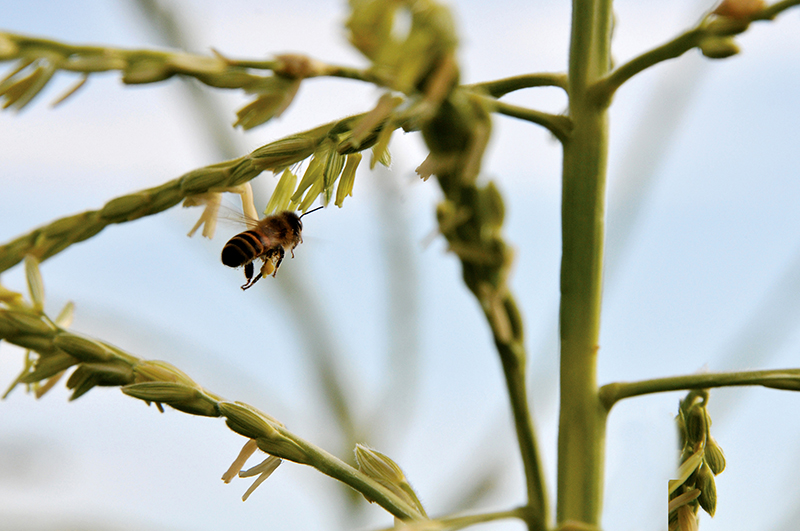December 19, 2016
Publication alerts agronomic producers to pesticide risks for pollinators
 Pollinators such as honeybees sometimes forage on agronomic crops that produce pollen or nectar and can be exposed to harmful pesticides in the process. (Purdue Entomology photo/John Obermeyer)
Download image
Pollinators such as honeybees sometimes forage on agronomic crops that produce pollen or nectar and can be exposed to harmful pesticides in the process. (Purdue Entomology photo/John Obermeyer)
Download image
WEST LAFAYETTE, Ind. - A new publication available from Purdue Extension could help crop producers minimize pesticide risk to pollinator species.
Protecting Pollinators in Agronomic Crop Production, the latest publication in the Protecting Pollinators series, describes some of the risks pollinators may face when pesticides are applied to field crops, such as corn, soybeans or wheat.
“Honeybees don’t necessarily need to be sprayed directly with pesticides to be harmed,” said co-author Rick Foster, entomology professor and Extension integrated pest management specialist. “Honeybees consume pollen, nectar and water to survive, and any of these can be sources of pesticide exposure. Additionally, planting dust or pesticide droplets may be suspended in the air as they fly through it. This publication will help agronomic crop producers to recognize some of the risks associated with pesticide use and reduce some of those harmful side effects.”
Foster co-authored the publication with fellow Purdue entomologists Christian Krupke and Greg Hunt, Purdue Extension educator Michael O’Donnell and Phil Sutton, St. Joseph County Extension director.
The publication includes sections describing why honeybees and other pollinators are important to the agricultural system, ways in which pesticide poisoning may occur, and best management practices to minimize the impact of pesticides, particularly insecticides.
Protecting Pollinators in Agronomic Crop Production is available for free download from Purdue Extension’s The Education Store.
The Protecting Pollinators series is funded by a Purdue Extension Issue-Based Action Team (IBAT) award, and is part of a U.S. Environmental Protection Agency initiative to protect pollinator health across the country. Pollinator species include honeybees as well as flies, butterflies, moths, beetles and hummingbirds.
Three additional publications in the series are currently available as free downloads from The Education Store: Protecting Pollinators in Home Lawns and Landscapes, available at https://mdc.itap.purdue.edu/item.asp?Item_Number=POL-1#; Protecting Pollinators in Fruit and Vegetable Production, available at https://mdc.itap.purdue.edu/item.asp?Item_Number=POL-2#; and Tips for Commercial Agricultural Pesticide Applicators, available at https://mdc.itap.purdue.edu/item.asp?Item_Number=PPP-113#.
For more information, contact Foster at fosterre@purdue.edu.
Writer: Jessica Merzdorf, 765-494-7719, jmerzdor@purdue.edu
Source: Rick Foster, 765-494-9572, fosterre@purdue.edu
Agricultural Communications: (765) 494-8415;
Darrin Pack, dpack@purdue.edu
Agriculture News Page

